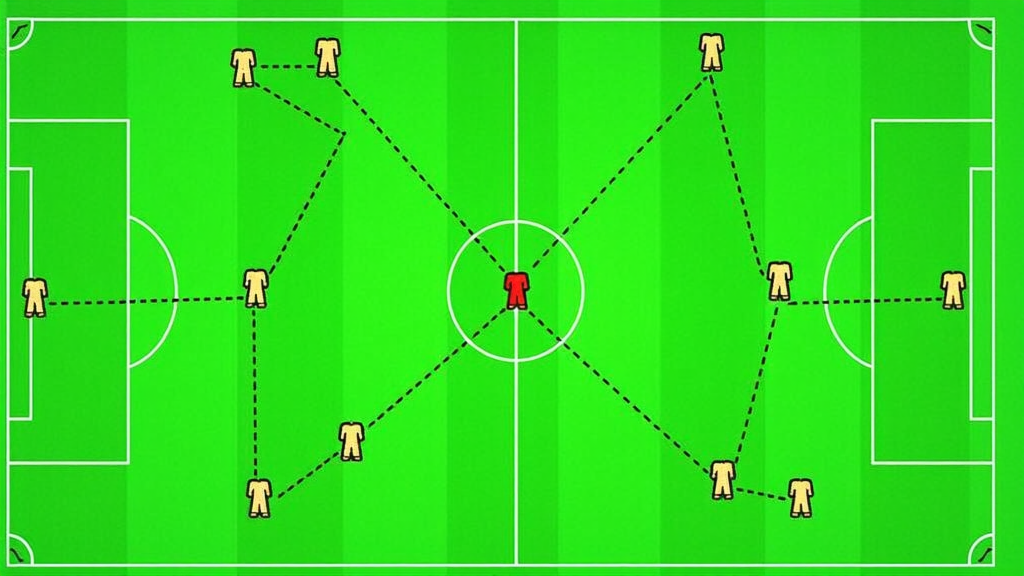 Soccer is more than just a game; it’s a tactical battle played out on the field with every formation and strategy. How a team arranges itself can influence everything from controlling the midfield to the speed of counterattacks. Whether you are a coach, a dedicated fan, or simply looking to understand the game better, picking the right soccer formation for various playstyles can give you a fresh perspective on team dynamics.
Soccer is more than just a game; it’s a tactical battle played out on the field with every formation and strategy. How a team arranges itself can influence everything from controlling the midfield to the speed of counterattacks. Whether you are a coach, a dedicated fan, or simply looking to understand the game better, picking the right soccer formation for various playstyles can give you a fresh perspective on team dynamics.
Different formations suit different approaches. Some teams favor dominating possession, while others rely on quick transitions and intense pressing. With careful thought and planning, you can match a formation to your team’s unique strengths and philosophy. In this guide, we review some of the best soccer formations that work across a range of playstyles, highlighting key steps and tips along the way.
Step 1: Assess Your Team’s Playstyle and Philosophy
The first step is to understand the type of soccer you want your team to play. Every team has its own identity and philosophy, so ask yourself important questions about your style of play and align your tactical structure with your overall goals.
Questions to Ask Yourself:
- Do you favor a high press or a counter-attacking game?
- Is possession-based play a priority?
- How much defensive solidity do you need versus attacking prowess?
- Do you want to stretch your opponent horizontally or play through the middle?
Example Considerations:
- If your players are quick and agile, a formation that supports rapid transitions might work best.
- If maintaining possession is key, formations emphasizing midfield control are worth considering.
- If your team has solid defenders paired with creative forwards, balancing both defense and offense is essential.
Once you have a clear idea of your team’s philosophy, you can begin matching formations to your needs. It is important that your tactics reflect the strengths and preferences of your players.
Step 2: Analyze Strengths and Weaknesses
Understanding your squad’s strengths and weaknesses is an essential part of forming your strategy. Different formations highlight different aspects of a team. For example, some setups benefit teams with quick wingers, while others favor a dominant midfield presence.
Key Areas to Evaluate:
- Player Speed and Agility: Fast forwards might excel in formations that support wide play or quick counterattacks.
- Defensive Solidity: Teams with disciplined defenders may benefit from formations that offer a strong backline.
- Midfield Creativity: A midfield bursting with creative talent needs space to influence both defense and attack.
- Technical and Tactical Flexibility: Consider if your players can adapt to various roles during a match.
Knowing these factors helps you tailor the formation. For instance, a 4-3-3 might offer attacking width but requires defensive coordination, while a 3-5-2 can solidify midfield control while still supporting forward thrusts.
Step 3: Balance Offensive and Defensive Responsibilities
Striking the right balance between offense and defense is key when choosing a formation. A formation that leans too heavily on attack might expose defensive vulnerabilities, while one that’s overly cautious may not create enough goal-scoring opportunities.
Considerations for Balance:
- Formations with three defenders, such as a 3-4-3, offer attacking support from the wings but demand disciplined wing-backs.
- Systems like the 4-2-3-1 can provide a sturdy midfield shield while offering creative freedom to attacking midfielders.
- Using double pivot midfielders ensures cover for the defense as well as support for the attack.
- Often, your opponent’s strengths also influence the defensive balance you need.
An effective formation takes into account both creative and defensive players, ensuring a seamless transition from defense to offense and back.
Step 4: Adopt Flexible Formations
Flexibility in formation is a major asset. The best teams can change their structure during a match to counter an opponent’s tactics or to exploit weaknesses. A flexible formation lets you adjust without sacrificing core identity.
Key Advantages of Flexibility:
- Allows in-game adjustments based on the opponent’s tactics.
- Enables players to switch roles as the game unfolds.
- Provides tactical unpredictability that can disrupt the opposition.
- Makes it easier to adapt if a player is injured or underperforming.
Popular flexible formations like the 4-3-3 or the 4-2-3-1 permit teams to change their approach mid-game. For example, a team might start with a 4-3-3 and then switch to a more defensive 4-5-1 when necessary. This approach relies on planning and practice to ensure every player understands their new role instantly.
Step 5: Adapt Formation to Game Situations
No matter how effective a formation is under ideal conditions, the dynamic nature of soccer often calls for situational changes. Whether you need to chase a game after conceding or protect a slender lead, having a plan to adjust formations is a smart tactic.
Situational Adjustments Include:
- High Press vs. Low Block: Depending on the score, a team can press aggressively or fall back to defend.
- Overloading the Midfield: Sometimes adding an extra midfielder can help control the game during crucial periods.
- Shifting Wingers: Wingers might tuck in to compact the midfield or stay wide to stretch the opposition.
- Formation Switching: Changing from a 4-3-3 to a 4-4-2 can provide additional central defensive strength when needed.
This tactical approach allows your team to adjust based on whether you are leading, drawing, or trailing, helping maintain control no matter the situation.
Step 6: Optimize Your Lineup and Player Roles
A formation is only as good as the players implementing it. Aligning player roles with your chosen strategy is crucial. Every player should understand not only the formation but also the specific responsibilities their position entails.
Effective Lineup Considerations:
- Match Players’ Natural Positions: Use formations that play to your players’ strengths rather than forcing unfamiliar roles.
- Clear Role Definition: Every team member must know their area of responsibility, be it defending deep, controlling the midfield, or spearheading attacks.
- Training Focus: Practice various scenarios in training so that shifting the formation becomes second nature during a game.
- Communication: Clear communication ensures that tactical instructions are executed without confusion.
This step makes sure that the formation translates into effective play, with every player clear on their tactical duty even when the pressure is on.
Final Thoughts & Next Steps
Soccer formations combine strategy with adaptability. Matching your team’s playstyle with a fitting formation not only improves organization on the field but also gives players clear roles. Start by identifying your team’s core strengths and preferred style, then select a formation that fits these attributes. Practice regularly until every player is comfortable with their role, and be ready to adjust tactical choices as the game evolves.
This thoughtful approach can boost match control and help you overcome competitive challenges. With persistence and practice, your team can switch tactics seamlessly when needed, ensuring that your strategy remains effective in any situation. How will you adjust your game plan based on your team’s strengths? Think it over, plan carefully, and watch your team’s performance improve on the field.
